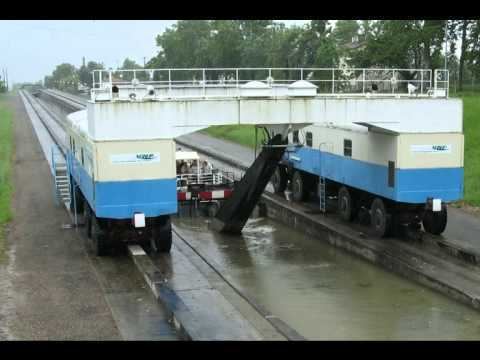 | ||
Water slope montech france 2007
A water slope (French: Pente d'eau) is a type of canal inclined plane built to carry boats from a canal or river at one elevation up to or down to a canal or river at another elevation.
Contents
Operation
The water slope uses a moveable gate in a sloping channel invented by the German engineer Julius Greve at the end of the 19th century and described by the French engineer Jean Aubert in 1961. To ascend the slope the moving gate can be opened to allow a boat to enter the concrete channel. The gate then closes off the bottom of the channel and seals off a wedge of water on which the boat is floating, within the channel. The moveable gate is drawn up the sloping concrete channel pushing the wedge of water before it until reaching the upper water level. When the water level in the wedge is equalised with that of the upper canal, an upper (non-moving) gate is opened and the boat is then allowed to float free.
Descending the water slope is the reverse of the ascent.
Water slopes in use
There are two water slopes in France, both in the south of the country. The Montech water slope (French: Pente d'eau de Montech) is on the Canal de Garonne. The Fonsérannes Water Slope is near Béziers, on the Canal du Midi, having been built to allow commercial barge traffic to bypass the adjacent lock flight. The latter water slope was abandoned on 11 April 2001.
